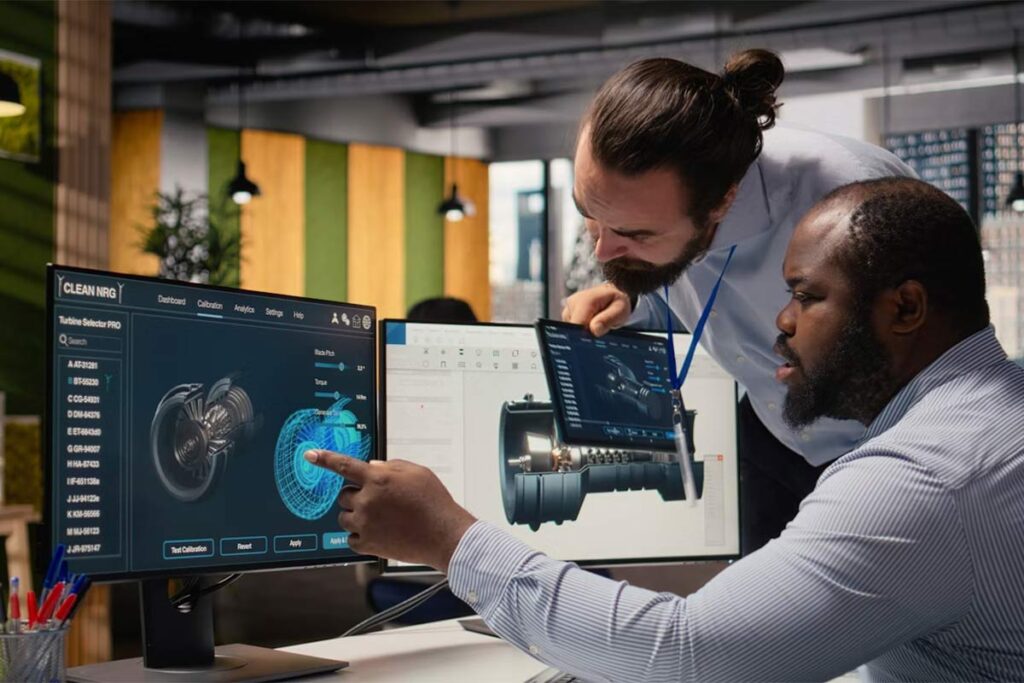If you read the headlines, it sounds like artificial general intelligence (AGI) is right around the corner. Bold statements from tech leaders in Silicon Valley paint a picture of an all-powerful AI system that can think, reason, and create—putting most white-collar jobs, including engineering, on the chopping block. It’s easy to imagine an omniscient digital system capable of designing, controlling, and fixing just about anything on its own.
The truth is far more nuanced and a lot more interesting.
AI is automating many everyday engineering tasks. CAD systems can now dimension automatically. Generative design tools can suggest new product geometries. Predictive models can flag maintenance issues before they cause downtime. These are all powerful advances—but they’re a far cry from AGI.
Today’s AI systems for engineering excel at narrow, well-defined problems, not the deep, contextual reasoning engineers use to make decisions in complex industrial environments.
The dominant paradigm in modern AI—large-scale models trained on massive datasets—simply doesn’t map cleanly onto the world of industrial systems. While the volume of data produced in industrial environments is often massive, a single oilfield can generate more data in a month than ChatGPT 3 was trained on; the data is sparse relative to the predictions needed to make accurate engineering decisions.
Even if the necessary data were available, AI trained purely on data struggles in the dynamic environment that defines industrial systems. It lacks the grounding in physical principles that lets engineers reason through uncertainty and adapt to new or imperfect conditions. It’s these gaps—between data sparsity, statistical prediction, and physical understanding—that defines the frontier of AI in engineering.
To understand where we’re going, it helps to look at where we’ve been.
AI didn’t start in consumer apps or chatbots. In fact, some of the earliest forms of AI, logic-based systems, were created to solve engineering problems. They gave rise to modern control systems, automation logic, and model-based design, all ways of encoding expert reasoning into engineering decision-making.
By the 1980s, high-fidelity simulators became commercially available, capable of modeling systems with remarkable accuracy. These simulators, pervasive in engineering today, were early forms of artificial intelligence: when combined with optimization algorithms they can “think” through complex scenarios and predict how a system behaves.
But even these powerful tools have limits. For example, they require specialized expertise to build and run; and they struggle to handle uncertainty. They are also computationally intensive—one simulation could take hours or days to complete. And they are siloed: built for specific uses, managed by separate teams, and challenging to integrate into real-time decision-making.
That’s starting to change.
A new wave of technologies that includes scientific machine learning (SciML), reasoning under uncertainty, and agentic AI is breaking through those barriers. SciML combines the rigor of physics-based modeling with the adaptability of machine learning, making it possible to build AI systems that can infer complex physical behavior quickly and accurately.
Reasoning algorithms now allow AI to navigate uncertainty in ways that mimic expert judgment. And agent-based architectures can coordinate multi-step workflows, bringing automation to higher-order engineering tasks.
What’s missing is a unifying platform that brings all of this together for generalized deployment in the industrial world, a system that integrates data, physics, and computation in real time—enabling continuous learning, optimization, and control even in imperfect conditions.
We’re not at Tony Stark’s J.A.R.V.I.S. yet, but we’re getting closer. In early deployments with customers, we’re already seeing AI amplify human capability: driving major improvements in efficiency, throughput, and emissions reduction. The real breakthrough isn’t automation for its own sake; it’s AI that works with engineers, helping them master complexity and accelerate innovation.
So, are engineering jobs at risk?
I can’t say for sure, but I do know that the role of an engineer is changing. AI makes engineers more capable. I see the next decade not as handing control over to AI, but fusing human expertise with AI’s power to create smarter, faster, cleaner, and more resilient industrial systems.
That’s not the dystopian future the headlines warn about. It’s a future built on reality, and it’s already taking shape.
Greg Fallon is the CEO of Geminus AI. Connect with Greg on LinkedIn: https://www.linkedin.com/in/greg-fallon/.
